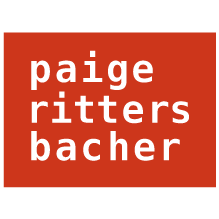
Schedulicity’s New User Onboarding
Redesigning & Streamlining Account Set-Ups
At Schedulicity, I was hired to work with the engagement team and together we achieved our middle funnel marketing goals through email campaigns, landing pages, in-app conversion messaging, and managing the onboarding experience.
It wasn’t long until we realized there wasn’t a clear walkthrough of the account set-up process and it left many users stranded during their first experience in the app. Most users wanted to jump into the wrong location to start building out their account, which is impossible to do with the product’s structure at the time. Our challenge was to communicate to users where to go first and why these steps were so vital. We also needed to accomplish this without using any development resources.
Below I’ve highlighted three (of dozens) iterations to our solution.
The first screen of the onboarding tour
first Iteration
Step-by-Step Walkthrough
Our first approach was to point out the three main steps of setting up an account: creating a service, adding a client, and booking an example appointment. We set up modals that prompted the completion of each step that we determined to be a complete account.
Because of some broken code and other miscellaneous workflow issues, this approach turned out to be too robust for the resources we had. There were too many pop-up styled modals, which were seen as intrusive. Based on the user feedback we received, we also learned this approach was ultimately more confusing in the end.
Key Learnings
Keep it as simple and streamlined as appropriate
Depend less on the existing software, more our messaging software
Step one, creating a service, was the most crucial step
second Iteration
The Product Tour
At this point in our process, we were operating out of two insights: three steps were too many to initially remember and a video tour of the entire set up (though somewhat helpful) was too long and clunky. We decided on an approach that would break up a tour video into short gifs in different modals and shorten the tour to just creating a service and booking an appointment.
The product tour helped users understand that these steps were important first tasks to a complete profile. And we could mostly ensure that they understood how to complete it by requiring interaction (see the next, arrow buttons) to complete the tour. This also gave the users and change to go over the process if it seemed confusing at first.
Key Learnings
During testing, we found out the vast majority of our users were using the mobile app. Our next efforts were put into testing for mobile compatibility.
third Iteration
Mobile Compatibility
After an audit of the mobile experience from first impressions to sign up and onboarding, we found a lot of issues the mobile experience across the board. (That case study coming soon.) We first tackled this flow for different mobile sizes and types.
What was reassuring at this point was that we had a good foundation placed, the test users always made it through the tour. The trickiest part was the consistency of styling.
In Conclusion
All in all, this project was a great approach in learning more about the assumptions and needs of new Schedulicity users and how we can aid their education earlier on in the middle funnel marketing efforts.



